The Spirit of Mushrooms: A Conversation with Róisín of Mycological Memories
From glowing mushrooms in Australia to market foraging in Thailand, this interview with Róisín of Mycological Memories uncovers the hidden worlds of fungi.
Meet Róisín, the curious traveler behind Mycological Memories, a storytelling project that traces the tangled roots between fungi, culture, and human memory. From the misty hills of Ireland to the tropical forests of Southeast Asia, Róisín follows mushrooms not just as organisms, but as teachers, revealing how they connect science, myth, and the magic of noticing.
To start, could you share a little about your background: where you grew up, your travels, and what first led you toward noticing fungi in the world around you?
Absolutely! I’m Róisín and I started Mycological Memories earlier this year. It’s a project exploring the cultural, natural and mythological roles fungi play around the world, based on my research and fieldwork as I travel.
I’m from Ireland, where I spent many summers hiking and camping. I only became curious about fungi after I found my first mushroom when I was studying Biotech in University. After finishing my Masters, I wanted to work with mushrooms and found a position with a mycology focused start-up in Scotland, and later in Australia. That work taught me so much and really supported my curiosity in mycology.
This year, my partner and I decided we wanted to take some time to travel, but I didn’t want to give up my passion for mycology. I decided to research fungi in every country I visited, which grew into the idea for Mycological Memories. I had no idea how it would go, but the project has led to many incredible experiences of meeting experts, conversations with locals, foraging trips and gathering many stories through interviews and surveys.
It’s been more rewarding than I could have imagined, slow traveling through Indonesia, Thailand, Vietnam and China already. Now I can’t picture traveling in any other way!
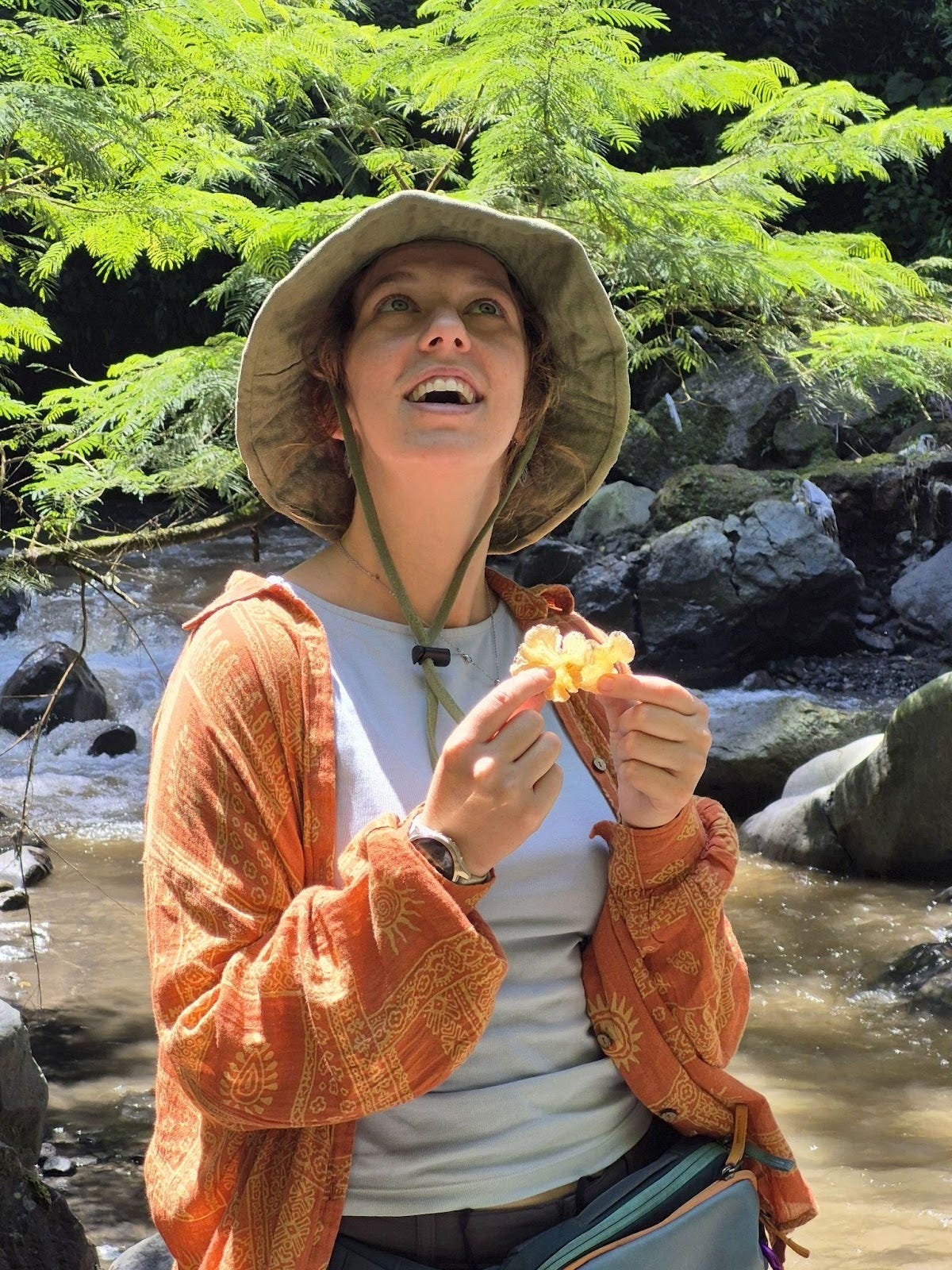
In your post “How I Met Mushrooms…and We Fell in Love”, you describe your first encounters with fungi in a very personal way. How has that moment continued to shape your relationship with mushrooms today?
Yes, in that story I describe the moment I found a mushroom for the first time. Up until then, mushrooms were only the white buttons at the shops. I had always loved nature, but I guess I hadn’t been paying full attention. On the day I found the mushroom, it was so peculiar and unexpected. I knew so little about mushrooms then that I even thought touching one would be poisonous. It sparked my interest in mushrooms but it also made me curious, what else had I not been seeing?
After that, I continued to notice fungi more and more and each sighting brought its own set of questions; why is this one pink? Why does this have pores? Why is this growing out of a log? Each question led to another and the answers were never obvious.
Now, I’m always scanning everywhere I go for fungi, but in this practice I noticed many other changes too. My enthusiasm to find mushrooms brought me outside more - not just when the sun was shining but into cold autumn rains and down muddy trails. It forced me to slow down.
The slower you move, the more mushrooms you see, and the more everything you see. I started noticing so many insects, sprouting saplings, burls on trees and it revealed a whole new layer of reality.
It also forced me to be present and my slow mushroom walks became meditative. I happily stroll for hours, humming while looking under leaves. But also discovering fungi has led me to many connections. Walking with friends, family or strangers and looking for mushrooms is pure magic. It’s very special watching that child-like excitement reveal itself again when someone finds their first mushroom.
You’ve named your Substack Mycological Memories. What does memory (whether personal, cultural, or ecological) mean to you in the way you tell stories about fungi?
Well, up until recently I really only worked on mushrooms from a scientific perspective. Although I love the science side, I felt like there was this other unexplored aspect of fungi.
Humans have always been connected to nature. We have developed stories to make sense of the world and culture to interact with it. This intersection between human and nature is well explored with animals, trees and even mountains and rivers - and I thought even if I couldn’t feel it right now, the same connection must exist for fungi.
When I moved to Australia for work I was perplexed by the paradox of first nations people being here for >50,000 years and yet so little about Australian fungi is scientifically known. I was struck by a comment I heard, that some aboriginal groups would be upset if certain mushrooms were picked. Information like that should be part of the wider discourse in science; we should be aware of these cultural caveats and they should be considered in research.
Memory to me has a few layers. There is the first layer of personal memories, the moments that shape our experiences, good or bad. Like finding your first mushroom, or that special meal you had with foraged fungi. The second layer is a cultural memory. The imprint fungi have had in tradition, the wisdom passed down through generations, the medicinal therapies developed within families, the common names and their meaning. And the last layer is the fungi themselves. They have been on this planet much longer than we have and they have a lot to show for it!
They have conquered all continents, made relationships with countless organisms, survived extinctions and just done bizarre things like learning how to glow! I like to think I can share a bit of that memory. Together, all these layers create a collective memory of our experience with fungi.
Some of your travels have taken you into unexpected fungal landscapes, like in “Desert Highway, Dreaming of the Dead-mans foot mushroom, Pisolithus.” What did those experiences teach you about resilience and adaptation, both in fungi and perhaps in ourselves?
Well, when I moved to Australia for work - although I knew I was going for mushrooms, something in me didn’t believe it. Mushrooms grew in cold wet forests and I couldn’t picture it any differently. But I was absolutely wrong as I quickly discovered. In Australia, mushrooms were fruiting in dusty dry landscapes.
Seeing the Pisolithus fungus fruiting under this heat amazed me. Pisolithus is a great example of this ability to adapt to extreme environments. It has learned to deal with high temperatures, high UV, low pH and grows comfortably around heavy metals.
What I learned while traveling so far is that when it comes to nature, there really are no rules. I’ve thrown all my preconceived notions out the window. From seeing mushrooms growing in deserts to seeing evergreen oak trees - if there is a niche available, something is going to grab it!
You talk about encountering bioluminescent mushrooms in “The Glowing Spirit of Our Forests.” What was it like to see them in person, and how did you write about that strange experience for your readers?
When I found the ghost mushrooms, it was in daylight, so I brought some back to my house. I assumed they probably wouldn’t glow anymore once picked, but to my surprise when I shut myself into a dark cloakroom with them, they still emitted their green glow.
It really does feel like magic, seeing something like that. I tried to photograph them, but my camera was not good enough. It almost made it more special, since this green glow was only going to be visible to me in this present moment.
I imagined how mushrooms like this would have captured the imagination of anyone who saw them. It’s easy to forget that before electricity, light came only from the sun or fire. Something like a fungus producing its own green glow would just be mystical to anyone. So, I tried to picture that feeling.
Then I did some deep research. I wanted to first understand the fungus; why does it glow? Which, like many things in mycology, is understudied. Then, I wanted to understand the cultural context. Luckily, I was able to find some brilliant first hand accounts of the first colonisers to Australia finding this mushroom and the fear it induced for them and the first nationals people. I liked to imagine this mushroom was giving them a warning.
“James Drummond, however, recorded that O. nidiformis was referred to as “Chinga”, believing that the spirits of ancestors resided within the mushrooms. For this reason, they avoided camping near them at night, and looking directly at their glistening green glow.”
Finally, I added in my own observations - why do I always see Omphalotus in commercial pine forests? It seemed to me like another act of defiance, fighting against the logging industry that has removed so much of Australia’s unique old growth forests.
From there, the story reveals itself. A spooky mysterious tale. A mushroom that is both poisonous and ghostly. I like to weave in personal experiences to give it flow and let the reader connect to me too.
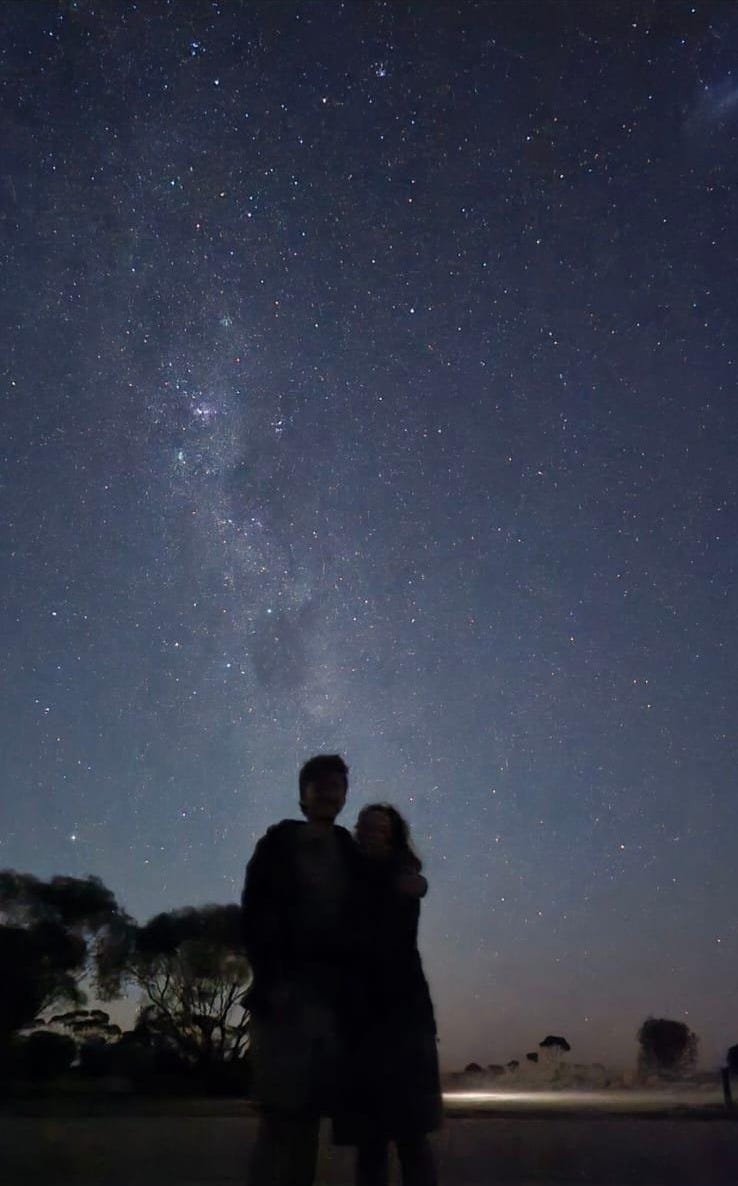
Your piece on the Australian giant red gum highlights the unseen fungal networks supporting those towering trees. Has learning about these hidden connections changed how you explore and experience forests?
Finding out about the underground network did not surprise me. Maybe because I had already studied ecology and microbiology; but I knew nothing works alone. The mycelial networks are incredible, but fungi are only part of the wider system.
The network only exists because of the trees that feed it, the trees only exist because of the insects that spread their seeds, the insects only exist because they can munch on the mushrooms growing from the network…and on it goes. Everything is entangled, everything is entwined.
I guess for me, it’s realising that you are part of the network, not outside of it.
We like to think we are separate from nature, but we are part of it. Travelling this year I have been able to see that more clearly, since people live so close to the land in many parts of Asia. I guess, once you realise that, walking through the forest becomes a lot more personal. You’re not just an onlooker, you are experiencing part of yourself.
When you die, you will return to the forest, to the soil and literally be fed through the mycelial network. You’re welcomed home and the cycle continues! Once you’ve established that familiarity, it is very hard not to care about your surroundings, and I’ve yet to become bored while exploring nature.

In Finding Wild Mushrooms at the Market in Khun Yuam, Northern Thailand, you capture fungi in a social, everyday setting. Do you see fungi as a bridge between the ordinary and the extraordinary?
Well, I see it in two ways. The mushrooms, how they are in nature and the way we interact with them. In Khuan Yuam for example you are surrounded by these stunning tropical forests teeming with biodiversity. But seeing how the locals have become intertwined with those forests by bringing that biodiversity into their food and customs is really interesting to me.
Maybe not a bridge between the ordinary and extraordinary, but a bridge to see the ordinary as extraordinary. The transient nature of mushrooms sets them apart from flora.
When an abundant summer plant blossoms no one really notices, but when it is that one time of year, when mushrooms fruit, everyone goes crazy. It creates an urgency, like a gold rush - to get out and pick them before they are gone!
Mushrooms are also unlike plants because they are either difficult or impossible to grow. Many of the most prized edible fungi such as chanterelles and boletes, only grow when connected to their mycorrhizal tree partner. Often these relationships need to have been established for years before a mushroom will fruit, so when they finally grow it is extraordinary!
This is just how fungi work - they are as ordinary as any other part of life; but to us, who see things more commonly from the perspective of plants, they seem really bizarre and extraordinary.
What I love about a story like Khun Yuam, is how the locals have turned something pretty ordinary, like the natural fruiting of fungi, into an extraordinary tradition and endeavor. Because of the seasonality of fungi, these people must have other jobs most of the year.
But for those few weeks in June, they are out in the forests at 4 am collecting mushrooms to sell on the side of the road. They are basically collecting free food, and turning it into money. Nothing will be more delicious than the taste of rarity and exclusivity.

A lot of your postings mix mythology, archetypes, and the spiritual meaning of mushrooms. How do you keep your interest in science and your love of myth and story in balance?
Yes, it is a constant consideration! From my experience the conversation on fungi generally falls into two categories. Either heavy scientific literature or more free-form spiritual writing. Both have their place, but I’m trying to land somewhere in the middle. Because of the extremity of both sides, mycology is often inaccessible to most people.
If you manage to learn the complex terminology, you’ll still have to deal with most literature papers being pay-walled and you probably won’t have the time to read through it all anyway. I love reading about mycology and so it is satisfying to bring that information to more people in an easier to digest format. If there is a topic that I’m exploring that is out of my depth, I often reach out directly to the authors to clarify things or learn more.
I get frustrated when I read things presented as fact that are not based on evidence. When I talk about anything scientific in my work, I ensure everything said is backed up by literature. That includes being honest when the answers are unclear. This makes it particularly challenging to talk about topics related to medicine or beauty for example, because that landscape is rife with misinformation, poorly interpreted science and sometimes just lies.
A problem for mycology also is that so much is understudied. The more questions you ask, the more you realise how little is actually known. Sometimes that can be unsatisfying but you just have to stay true to the science. The beauty of science is that the facts actually show you how remarkable and magical our world actually is - no need to make things up because it already is incredible all by itself.
So that’s the science and research; but there is also the story aspect! A major part of this project is covering real life stories and voices of people connected to fungi. I gather this information by meeting wonderful people in person or through my online survey.
The parts of my work coming from these interactions are not based on scientific evidence, but based on my honest lived experience. If a local man tells me a story that doesn’t check out scientifically, but has been part of his lived experience; then that is absolutely true for him.
The way I approach writing these first hand experiences is fundamentally different to how I write the scientific factual side. For example, in Thailand I talked to a man who told me “All small white mushrooms are edible”. I know that this is not true, especially the world over - but practically and from his lived experience, it was valid. He was mainly referring to Termitomyces microcarpus, a small white edible mushroom.
Just because it’s not academically researched doesn’t mean it’s not important or interesting. It’s just important to distinguish between the two.
Weaving all of this together in prose makes it easier to understand to a wider audience and more enjoyable to read. I hope that when people read my posts, they will learn something new about mycology and be inspired by the story to look at their environment differently.
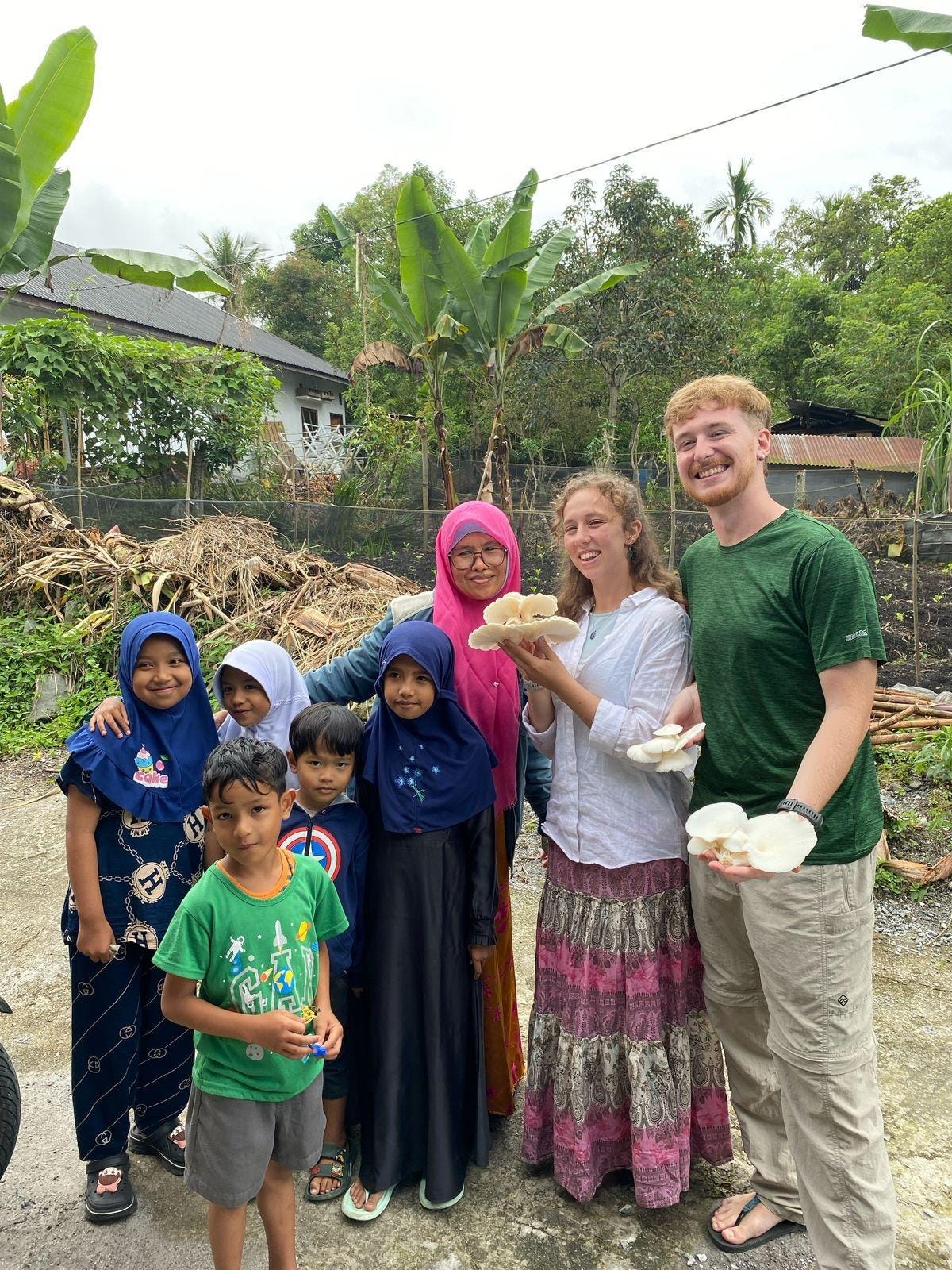
Your writing has a beautiful and thoughtful tone. Do you have a specific way of writing or a ritual that helps you get across what you call the “spirit” of mushrooms?
Thank you so much! With the pieces I write for Substack and for my book, I try to focus everything around a story. Before I go to a new location, I do online research about the fungi in the region. I also try to reach out to people who might be interested in meeting and discussing their work or their passions.
At that stage, I don’t know what I will write about until I find it through field work and online research. If I’m meeting someone for example, I prepare some questions that I want to explore with them.
Writing is a skill I am new to, so I’m going through a lot of trial and error. I bring my field notes, research and ideas together using the Notion software. For my book this really helps me join the dots on different themes and topics as I explore.
When I start to write a story, I drag and drop all the relevant information into a separate page and begin to write! I find relevant papers covering mycology, ecology, ethnomycology, folklore and culture and then look for secondary sources like blogs. I keep a master bibliography to track all my citations across my work. Then, I see where I can tie in any personal experiences with that topic.
Once I have the structure of the story together, I like to see if I can find a unique theme or angle to make the story more interesting to read. For example, when researching for my recent post on Termitomyces mushrooms I loved how the termites themselves farmed the mushrooms. I decided to write from the perspective of the termite, showcasing their active relationship with the mushrooms.
I like to add in emotions and descriptions to bring the story to life and make it a narrative literary piece instead of just non-fiction. What I aiming for at the end is a dynamic overview of whatever fungi or topic I am exploring. That is the spirit of the mushroom, not one dimensional, but multifaceted in so many ways.
You called Substack “a soft landing” when you initially joined. What has been the most surprising thing about getting people to read about fungi and memory with you?
The first surprising thing has been that people are interested. The idea for this project came from my own desire to read more about fungi from different perspectives. I thought, if that information isn’t already out there, then maybe people don’t want to hear it! But I’ve been pleasantly surprised to see that there is some interest there.
Secondly, I have been blown away by the kind and welcoming nature of the people I have met along the way so far. When I reached out to people at the beginning explaining my project and asking if they would like to chat or meet, I just assumed I would never receive a reply. But, the opposite often happened. Although fungi is a niche topic, those already involved in it are always very passionate and willing to share.
What topics, fungus, or sceneries are you most looking forward to writing about in your next essays? And how do you think your writing will change as your readers become more interested?
I’m lucky to have come across so many interesting topics over the months, so I have slowly been researching and writing those. In particular, I am really interested to share my experiences in Yunnan, China. I have also met and interviewed some really interesting people so I’m looking forward to weaving their stories into upcoming work! Soon I will travel to China, Korea and Japan where I’m sure to find some more mushrooms to explore.
In the long term, I’m excited to see how this project grows with Substack and how it will influence my writing. I am not an expert writer by any means, so I am looking forward to honing the craft of writing as I go.
Ultimately, my main focus is on writing my book which I will continue to research in the field and online until probably mid next year. My travels next year plan to take me to South Asia in places such as India, Sri Lanka, Nepal and Pakistan. There is a strong culture of ethnomycology in these places that I’m keen to explore.
Using Substack allows me to stress test some of my ideas and stories and guides me through feedback into what resonates and what doesn’t. It makes this book project feel more like a living breathing project even when it is still in the research phase! In the future, I do have an aspiration to work on a project focusing on Ireland and our relationship to fungi. But that will come once I am settled back at home.
If Róisín’s stories have sparked your curiosity about the hidden world of fungi, you can follow her ongoing journey on Mycological Memories on Substack.
She’s also gathering stories, traditions, and encounters with mushrooms from around the world, you can share your own by filling out her short survey here.
And if you happen to cross paths on her travels, she’d love to meet fellow fungi enthusiasts in the field.




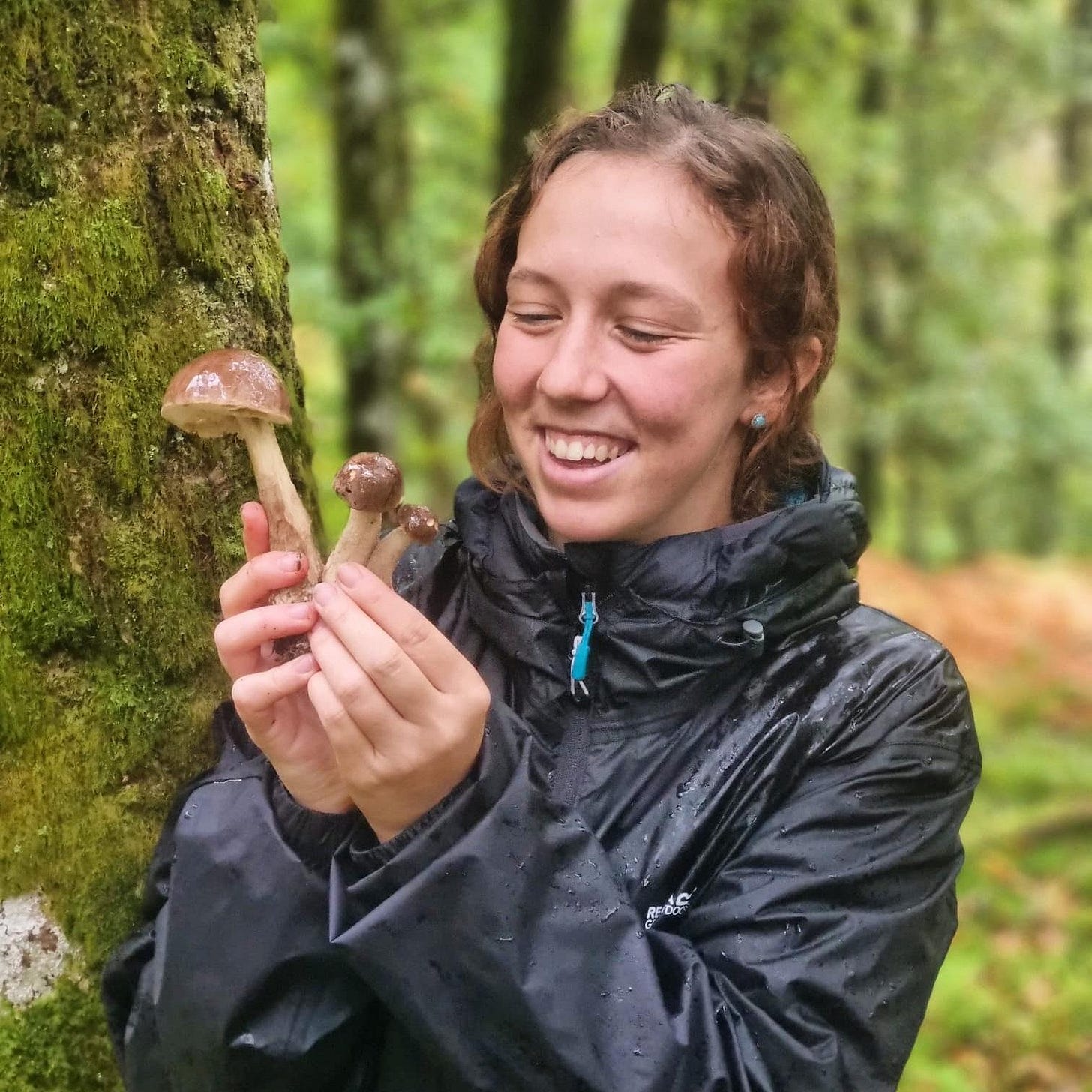


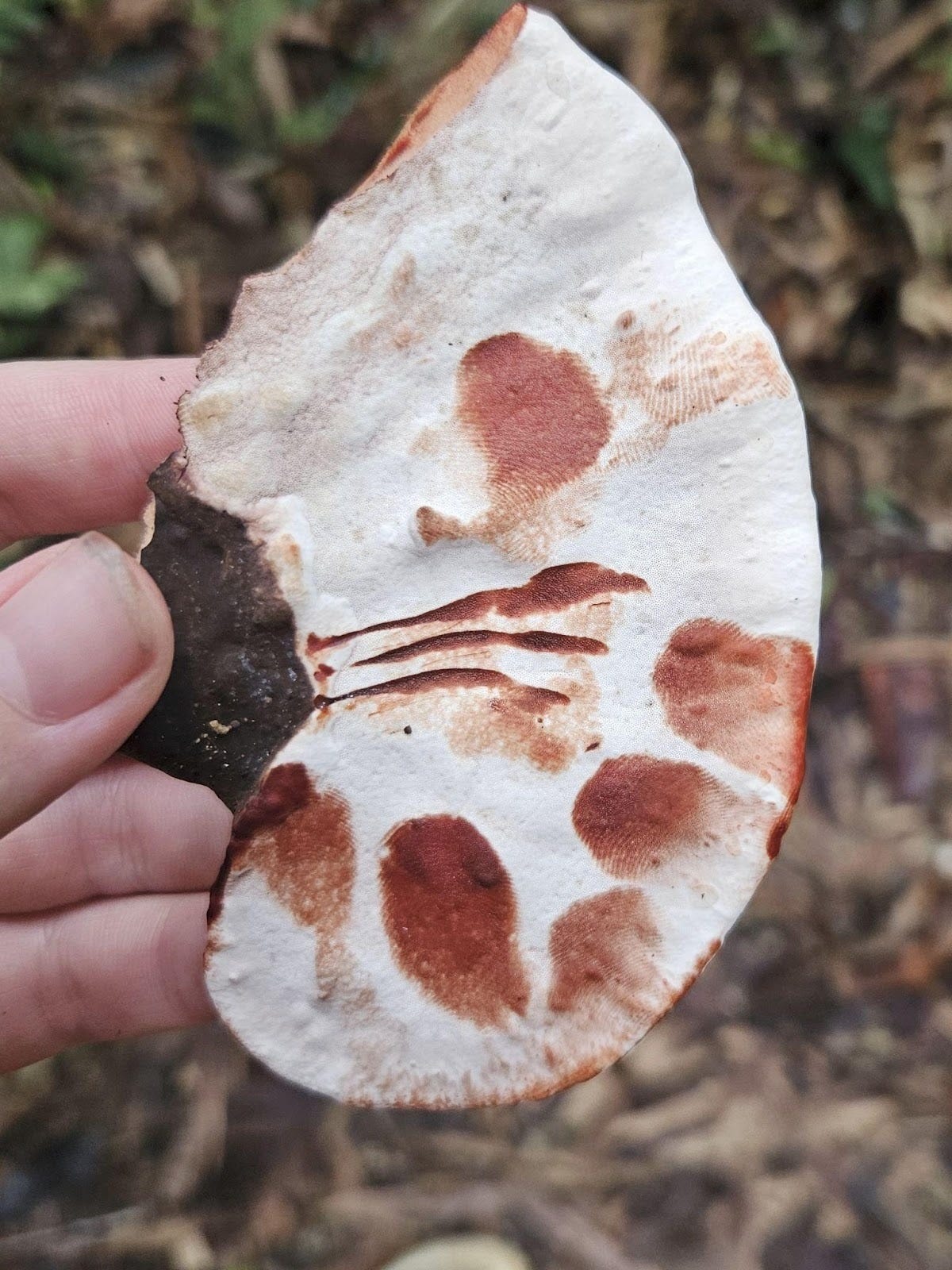
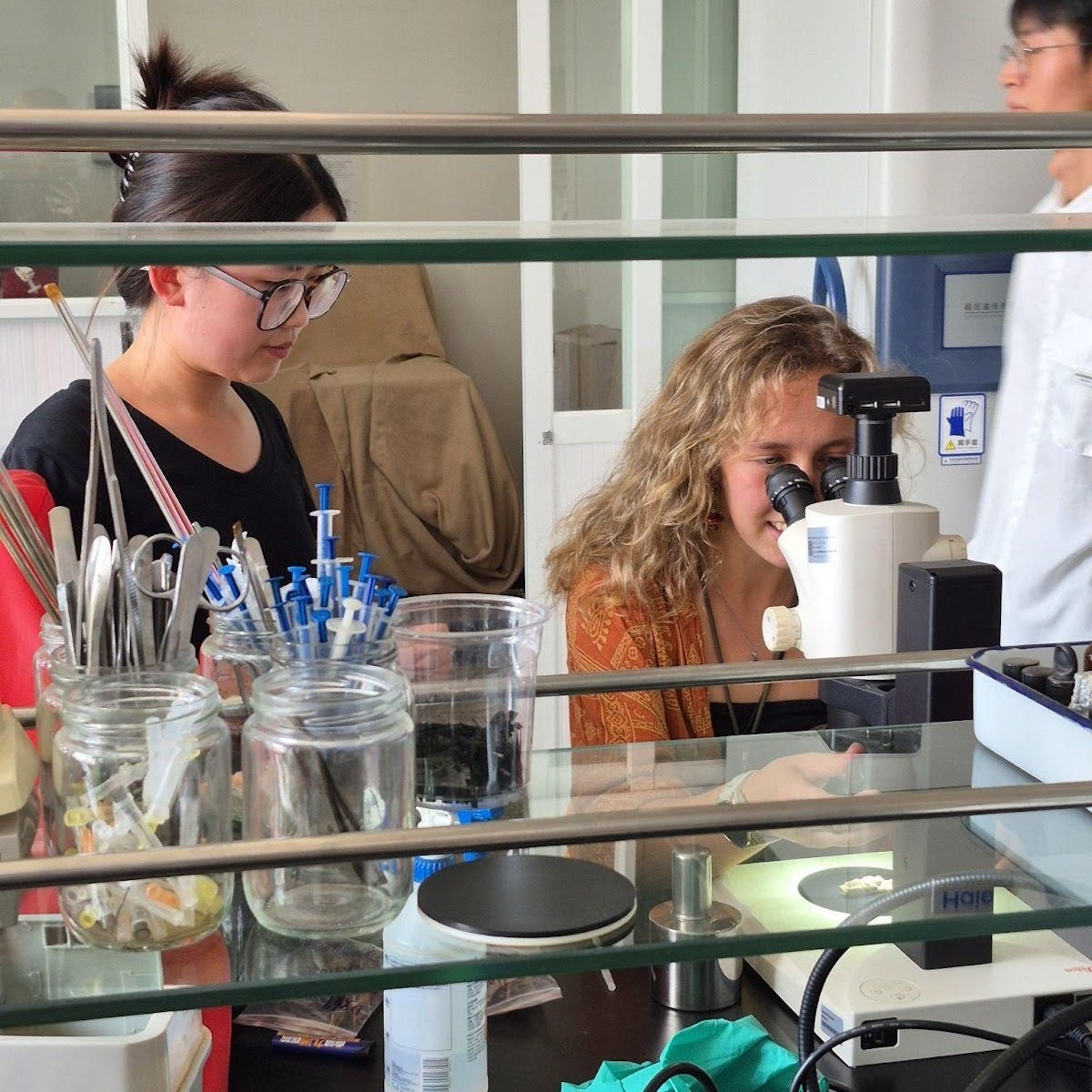



Thanks Joseph for the great Interview questions! I really enjoyed the process and your work has been a huge inspiration to me. Hope to meet someday in the Jungles of Asia, or the temperate forests of NZ or Ireland 🥰🩷🍄
Are most of the mushrooms you showed edible? Which are non-edible or poisonous?